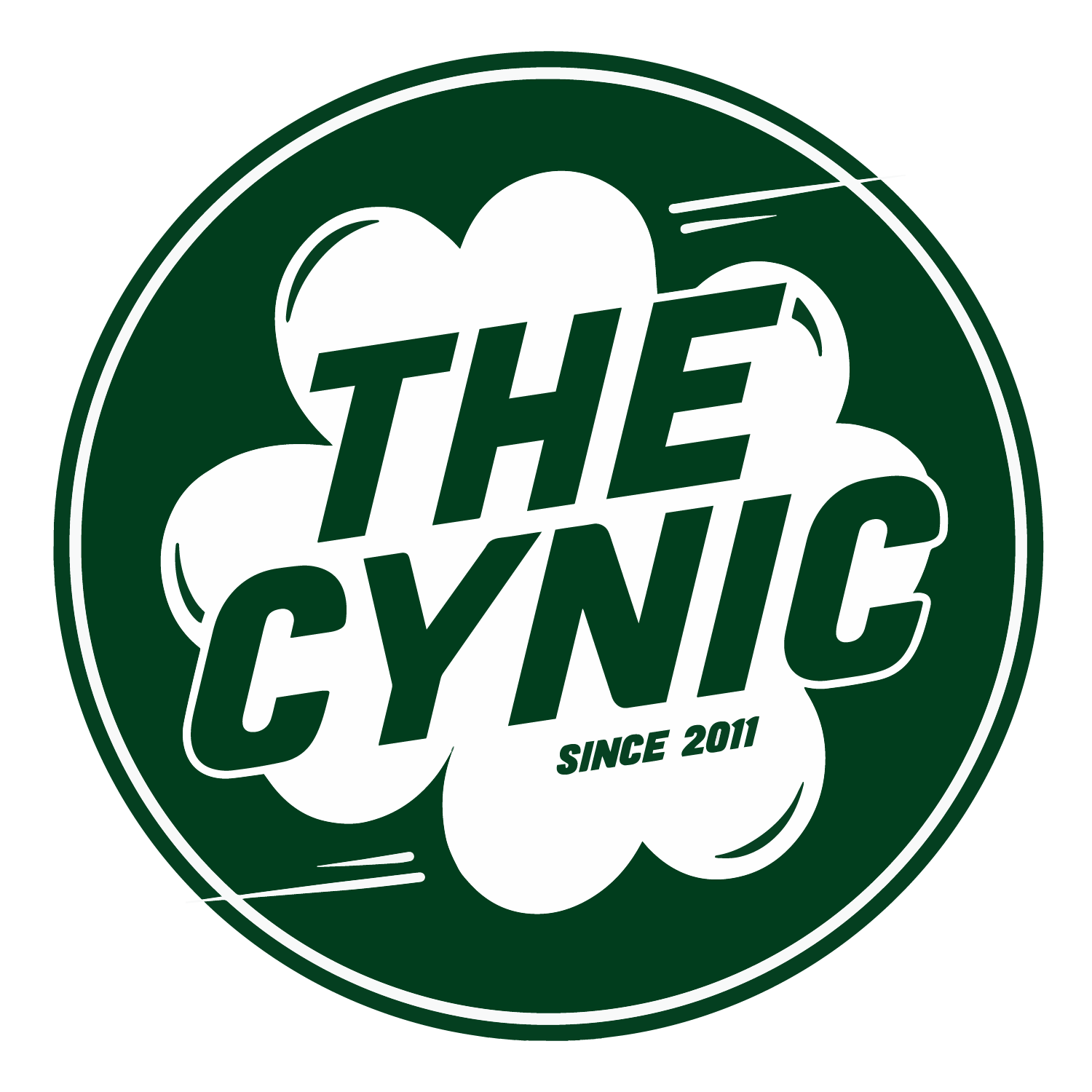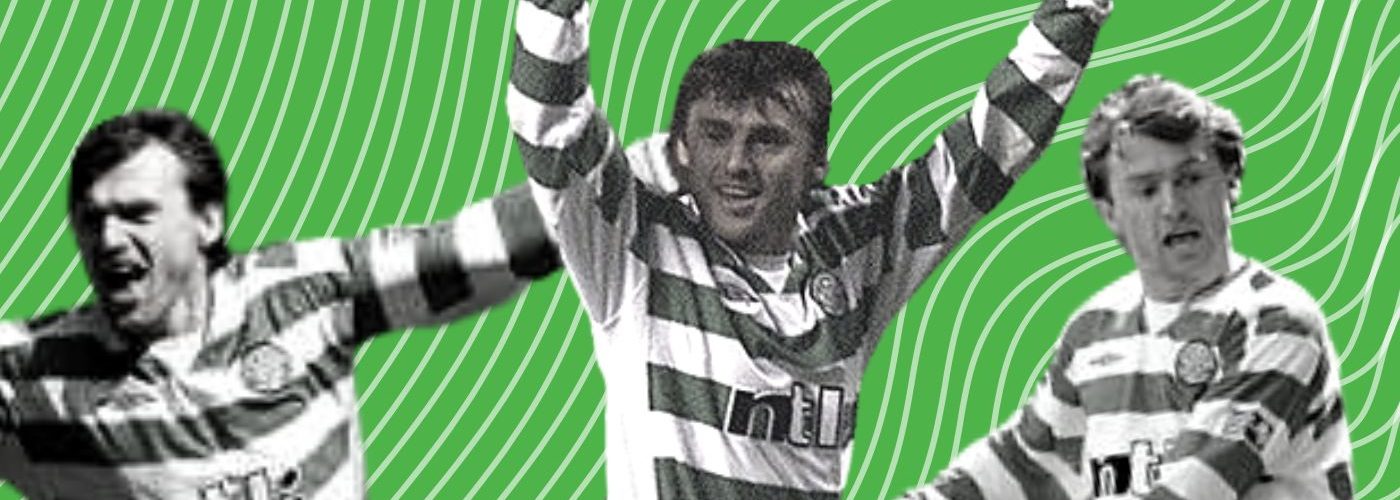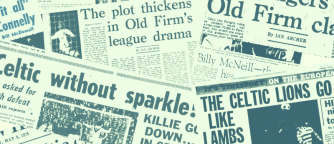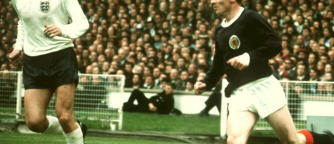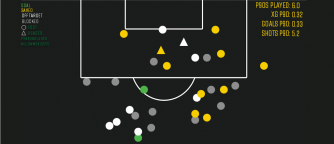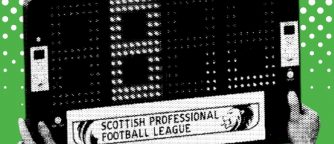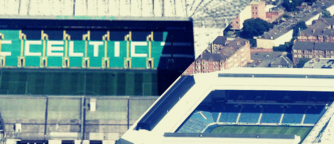“My favourite time, my most special time, was at Celtic,” remarked Lubomír Moravčík years later. “They said I was a gift from God, but it was the opposite – Celtic was a gift from God to me. Celtic is unique.”
Is it any wonder the man known as Lubo is deemed a modern great among the Parkhead faithful? The diminutive Slovakian international cost the club a mere £300k in the winter of 1998 and spent four eventful seasons in Scotland, a period that got off to an incredible flying start. First up, there was the 6-1 home drubbing of Dundee on his debut, when Lubo bagged an assist for Henrik Larsson’s hat-trick; then, a fortnight later, the 33-year-old stunned pundits who had written him off by scoring twice in a 5-1 rout of Rangers at Celtic Park. Defeat that day would’ve seen a 13-point gap open up at the top of the table, so the newcomer’s heroics were especially welcomed. Indeed, Moravčík’s swaggering performance threatened to eclipse whatever might follow.
The tousle-haired midfielder buried his first opportunity that day from the edge of the box, lashing a left-footed strike into the bottom corner after just 12 minutes. Moments into the second half, he then extended Celtic’s lead with a commanding header from a Tom Boyd cross, hanging in the air for an improbably long time before directing the ball so far beyond Antti Niemi that the Finnish goalkeeper didn’t bother to dive. As debuts go, this was a performance straight out of the top drawer, confining Rangers to their worst derby defeat in 32 years and sending the home crowd into raptures. Silky in possession, confounding the opposition with feints, and linking up well with Larsson, the little wizard vindicated Jo Vengloš’ decision to bring him to Paradise and nourished hopes that we might retain a league title for the first time since 1982.
But where had he come from?
Moravčík was born in Nitra, a Glasgow-sized city in western Slovakia (then Czechoslovakia), in 1965. As with many promising young talents, it was the local club, FC Nitra, which gave him his first taste of action as an 11-year-old junior. After making an impression, Lubo signed pro papers with the team aged 18 – then repaid the faith by staying for seven years, during which spell he also attained a diploma from Nitra’s University of Agriculture. In turning out for his boyhood club, Moravčík was following in the footsteps of his father Ján, who wore the shirt during the 1950s; an era which also saw Nitra ascend to the country’s top flight.
“The end of my career in Nitra was very successful,” reflected the younger Moravčík. It certainly had been: not only had Lubo helped the team to a third-place finish in the ‘88-89 season, their finest result in 27 years, but he doubled his previous best goal tally the following year, netting 14 times in 29 appearances. “Because we played in the Premier League, we qualified for the UEFA Cup,” remembered the player – but the fixture was one to forget, a 5-1 aggregate humbling at the hands of FC Köln.
A better memory was World Cup 1990 in Italy, the last major tournament in which Czechs and Slovaks competed as one state. After the fall of communism, fans were free to support their national team abroad for the first time, and Moravčík was one of few names still playing at home to make the squad. Under the stewardship of – guess who? – Dr. Jo Vengloš, the Czechs had an excellent tournament, beating the United States and Austria to finish group runners-up to Italy, before easing past Costa Rica in the Round of 16. Alas, the underdogs fell to West Germany in the quarter-finals and Moravčík was dismissed in the 69th minute for protesting a call by referee Helmut Kohl. Even so, the 25-year-old had played his part in an overwhelmingly positive campaign.
Though he loved playing in front of an adoring home support, Lubo was destined to outgrow FC Nitra. Like many internationalists before and since, the World Cup was a proving ground and he was soon on the move with Saint-Étienne tempting him to Ligue 1. As a mark of how highly the French club rated him, he was even handed Michel Platini’s No. 10 jersey. Ironically, Saint-Étienne’s finest achievement had been a run to the 1976 European Cup final at Hampden Park, a game in which they squandered numerous chances before succumbing to the mighty Bayern Munich. Hampden, of course, had its own role to play in Moravčík’s future: it was where he’d one day lay hands on his first trophy.
Unsurprisingly, the classy playmaker became a mainstay in the Saint-Étienne squad, logging over 30 appearances in five out of six seasons, winning Czechoslovak Footballer of the Year (and Best Foreign Player in Ligue 1) in 1992 and receiving the captaincy in his final year. Despite failing to win a trophy during his tenure, Zinedine Zidane – who faced Lubo when representing Cannes and Bordeaux – later called him one of the best number 10s he’d come up against. Marseille also made an approach for him in 1992 before going on to win the inaugural UEFA Champions League, a sign of just how comfortable he found life in Ligue 1.
“I think if it was my son in the same situation, I’d tell him go,” Moravčík reflected during his Hoops days. “But I don’t regret staying at Saint-Étienne. It was a different situation because I was under contract, people really liked me, I was one of their heroes and it was difficult to move. Especially because the club was really generous; they offered me a really good contract and security for my family. I was 27, I signed until 32… I refused the offer because I was not alone to decide. But later on, everything showed me that this was a bad decision… Because with my career, especially when I was 27, it was really the moment to move to a big club.”
Missed opportunity or not, Moravčík’s time in France was successful from a personal standpoint as he managed to score a handful of goals in eight consecutive seasons in the top flight, including for Bastia whom he helped secure back-to-back top 10 finishes before moving to the Bundesliga in 1998. For the first time in his career, Lubo failed to make an impact as he appeared just five times for MSV Duisburg, with friction between he and manager Friedhelm Funkel reportedly to blame. When his old national coach Vengloš put the feelers out, he was instantly intrigued. Celtic Park – Paradise – beckoned.
Moravčík came to Parkhead with obvious pedigree. He had featured in a World Cup and scored goals for fun in one of Europe’s best leagues. Nevertheless, the Scottish football press remained sceptical. One tabloid newspaper went so far as to report the switch with the ignorant headline “Celtic Sign Dud Czech.”
“I don’t know what I find more laughable; the fact that Celtic cannot find £500,000 from their biscuit tin to sign a proven talent like John Spencer, or the fact that they then spent £300,000 on one of Dr. Jo’s old pals, the unknown Lubomir Moravcik!”
Hugh Keevins, Sunday Mail
It must’ve been quite something to watch their faces redden as the veteran ran the show during that memorable derby debut. Just as one-and-out manager Wim Jansen had bequeathed Henrik Larsson, Dr. Jo’s parting gift to our club was his incomparable old pal.
“I knew Celtic because I like football, I was always interested in football,” said Moravčík. “And when I came and saw for the first time the stadium, I said: I heard about Celtic – but I couldn’t imagine how big Celtic was. And definitely the first touch with the club was brilliant, because the stadium was already full of 60,000 people. And I said to Eric Black (assistant manager), I can’t play bad. I can’t play bad.”
Our new No.25 may have hit the ground running, but the 1998-99 season was not plain sailing, far from it. In spite of going unbeaten during the first 11 games of 1999, with Lubo netting in 5-0 and 7-1 demolitions of St Johnstone and Motherwell, inconsistency – particularly away from home – saw Celtic concede the league title to Rangers; they were also shockingly dumped out of the League Cup by Airdrie and, after coasting to the final, beaten 1-0 in the Scottish Cup by their arch rivals. At this stage, Moravčík could’ve been forgiven for thinking he was cursed: there would be no trophy at the end of the rainbow.
This was a period of great upheaval at Parkhead, as chief executive Fergus McCann – who’d rescued the club from bankruptcy at the eleventh hour in the mid-90s – made for the exit, alongside 63-year-old Vengloš. In came club icon Kenny Dalglish as director of football and managerial rookie John Barnes as head coach. The subsequent campaign might charitably be described as a mixed bag. Talismanic Larsson suffered a horrific leg break against Lyon in October’s UEFA Cup second round, ruling him out for the rest of the season. As had happened the year before, Celtic then slumped to cup defeat against minnows, beaten 3-1 at home to Inverness Caledonian Thistle – a result that expedited Barnes’ departure. The league was also lost by an embarrassing margin of 21 points as we failed to defeat our rampant cross-city rivals in any of our four encounters.
Moravčík remained indispensable though, scoring eight goals in 30 league appearances and proving himself a handful with his confident, unhurried style, inventive touches and inch-perfect penetrating passes. He also sent us to the League Cup final compliments of a powerful headed winner against Kilmarnock, then featured prominently in the 2-0 victory over Aberdeen at Hampden. At the age of 34, he finally had a cup in his hands. It wasn’t the league or the more prestigious Scottish Cup, but it probably made no difference in that jubilant moment in front of 50,000 supporters.
The 2000 League Cup was an appetiser. But Celtic badly needed a manager who could get the best out of the team for a whole season. And we needed Larsson back. Both wishes were granted in time for the 2000-01 campaign, when lifelong supporter Martin O’Neill walked through the door exuding quiet authority. Guardian writer Glenn Gibbons was part of the media scrum that day and called the new gaffer “the most strikingly impressive and authoritative personality to have arrived at Celtic since Jock Stein.” A bold claim, but one that was soon vindicated.
O’Neill amusingly recounted his first impressions of the veteran midfielder: “My first real meeting with Lubo was in a pre-season friendly in Leipzig, when he was asked to play sort of a wing-back role. I knew that perhaps he wasn’t capable of doing that, I just didn’t expect him not to do any running whatsoever! I had a few words with him in the dressing room at the end of the game, that his work-rate would need to improve somewhat if he was going to play a major part in the team. Thankfully Lubo didn’t understand a word I was saying and didn’t take it to heart!
“It was some weeks later that we got to know the real Lubo Moravčík, a simply sensational player – two of the best feet you’ll ever see in European football, if not the world. And there are not many players of that ilk, that ability, in European football.”
After mostly heartache in the previous two seasons, the O’Neill era began in glorious fashion as Celtic romped to their first domestic treble since 1969, losing just three games along the way. Lubo made 40 appearances in all competitions that season, equalling his career best goal tally of 14. Along with Paul Lambert and Stiliyan Petrov, he was integral to the swashbuckling midfield, providing creative counsel to the deadly strike force of Sutton and Larsson, the latter of whom claimed the European Golden Boot that season. Lubo even scored the winner against Hearts on trophy day, as the balance of power shifted back to Glasgow’s East End.
Needless to say, Hoops fans have many joyous memories of that 2000-01 campaign, with resounding victories over Rangers especially luminous. The Gers were dismantled 6-2 at Celtic Park, Moravčík grabbing a few assists; knocked out of the League Cup in a hotblooded semifinal (3-1); and even hammered 3-0 on a spring day at Ibrox with the title already sewn. Like his debut in the fixture, that final battle of the season was a Moravčík masterclass. After latching onto a Larsson pass, he casually slotted the opener under an approaching Stefan Klos; then doubled the scoreline with a scintillating piece of skill 13 minutes later. It was our first triumph at Ibrox in six-and-a-half years and a reiteration of Moravčík’s evolving idol status. O’Neill later called his contribution to the treble-winning team “immense.” A view shared by a certain Swede.
“For me, he was one of the best I ever played with,” Larsson told CelticTV in 2017. “Still to this day I don’t know if he was right-footed or left-footed. He could hit the ball – free kicks, passes – he was so good it was unbelievable.”
When asked to name the best Hoops player outwith the Lisbon Lions, the late Bertie Auld didn’t hesitate: “For most people it would understandably be Henrik, who was a fantastic player; but in my opinion it would have to be Lubo Moravčík. He was a very special talent.”
From no trophies in 17 seasons to four in two; Moravčík was in his element. But the Indian summer had its own coda for the 36-year-old as Celtic had qualified for the Champions League. Before that though, there was a bizarro game against Manchester United at Old Trafford for Ryan Giggs’ testimonial. Eric Cantona – whom Moravčík had played opposite in France – even got a late cameo. Against a superstar lineup, Lubo scored a magnificent free kick from 30 yards to beat Barthez at his near post, as Celtic won 4-3. A taster for the top table in Europe, where the Hoops were drawn against Juventus, Porto and Rosenborg.
Perhaps surprising given his quality, but inevitable due to his age, Lubo was deployed sparingly by O’Neill during the European campaign, the trio of Lambert, Lennon and Petrov generally occupying the central midfield positions. Apart from being brought on as a second-half substitute with the team trailing Porto and Rosenborg away (both games ended in defeat), he didn’t feature until the final tie, a Halloween home match against Juventus. Perhaps it was was written in the stars. Starring for La Vecchia Signora that night was Czech dynamo Pavel Nedvěd, a bank-breaking recent signing from Lazio.
“I recall the game very well, and I remember playing against Moravčík,” Nedvěd told the Scottish Daily Mail in 2012. “He was a hero of mine as a young player, he was my idol. Lubo had the wonderful ability to play as well with both of his feet. He could do anything with left or right. He played for many years at Celtic Park and I followed his career. I was fortunate to have the chance to play at Celtic Park at the same time as Lubo did, but not fortunate with the way he played against us on that evening… Afterwards, I got his shirt.”
Moravčík was instrumental in a thrilling 4-3 victory, wholly justifying O’Neill’s decision to play him in place of Petrov. The maverick’s tricky footwork, probing runs and panoramic vision were vital against the Italians’ robust defence, and he forced Carini into a fingertip save with a low drive from outside the box early on. Then, with Celtic trailing 1-0, he wrong-footed Michele Paramatti to deliver a perfect cross for Joos Valgaeran to head in the equaliser. His subsequent delivery from a corner was equally magnificent, as Chris Sutton bulleted another header into the net.
“I made the most of the moment,” Moravčík acknowledged in 2015. “I was subbed near the end and I will never forget the standing ovation I received from the Celtic supporters.”
Due to Porto’s defeat of Rosenborg, we were out of the Champions League. But it was off the back of an exhilarating win over the Italian giants. And a virtuosic display by our little genius.
Moravčík ended his time in Paradise with a fifth trophy, as we retained the title by a staggering 18 points, without losing a single league tie all season; then he reunited with Vengloš at Japanese J-League outfit JEF United Ichihara, where he featured just twice before retiring. Had he stayed in Glasgow another year, one wonders whether his excellent footballing brain might’ve helped Celtic overcome Porto in the UEFA Cup final…
“I left the club in 2002 but I haven’t been forgotten,” says Moravčík with a smile. “When I am on holiday in Spain, playing golf, the Celtic supporters approach me and ask for a photo or to talk about Celtic. It still amazes me.”
We fans, of course, would say that the amazement lies with us. So would the Saint-Étienne faithful: Lubo is still considered a legend in the Rhone region and was even appointed club ambassador in 2013. The same year, the old No. 10 was in the stands when they won the French League Cup.
A consummate showman and an engaging character, Moravčík’s career will forever be remembered for all the right reasons. That Czech Dud headline? Not so much.
